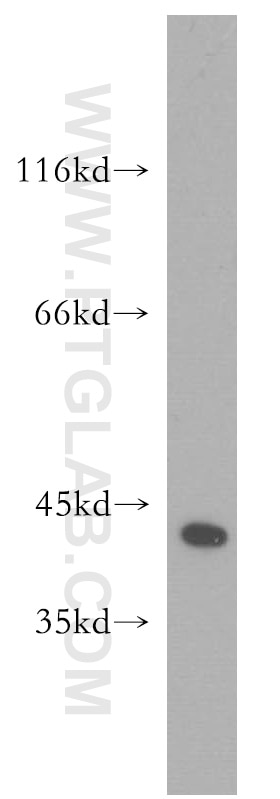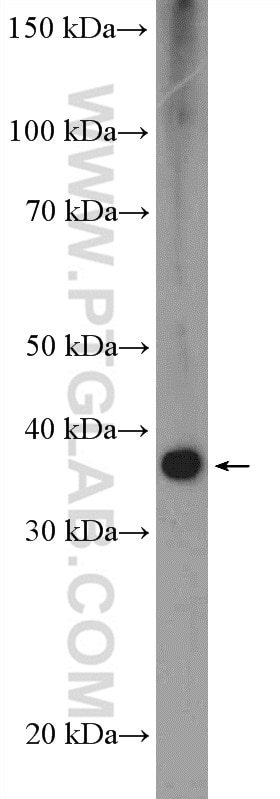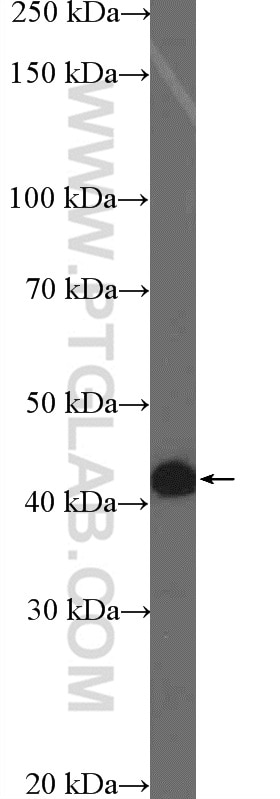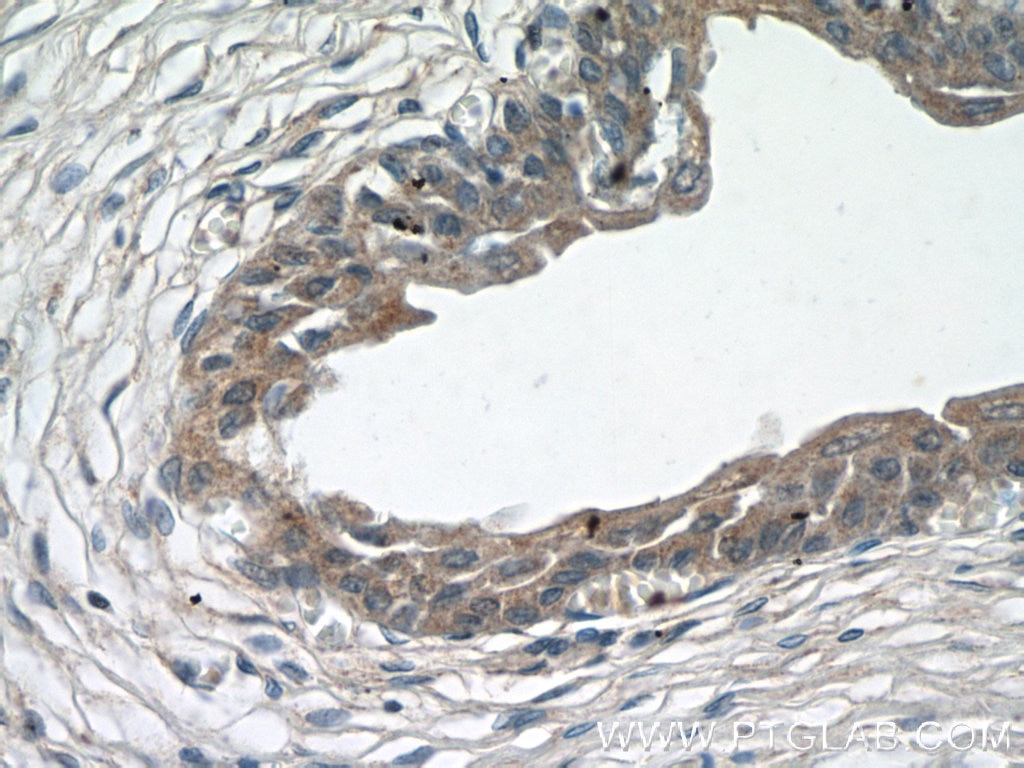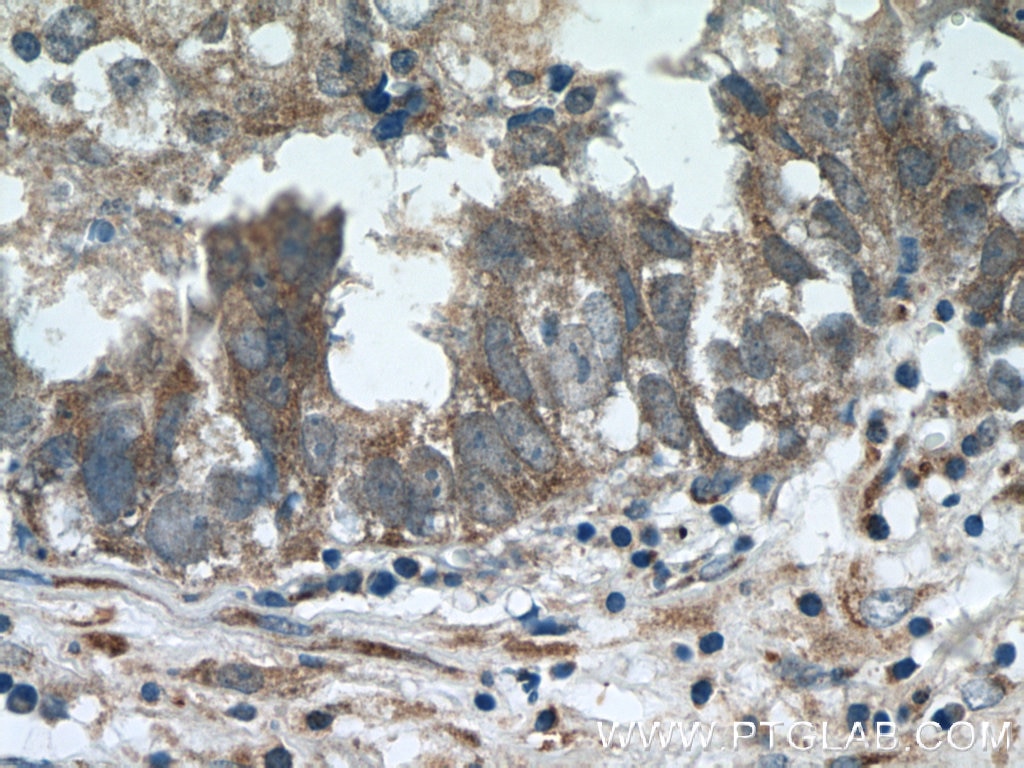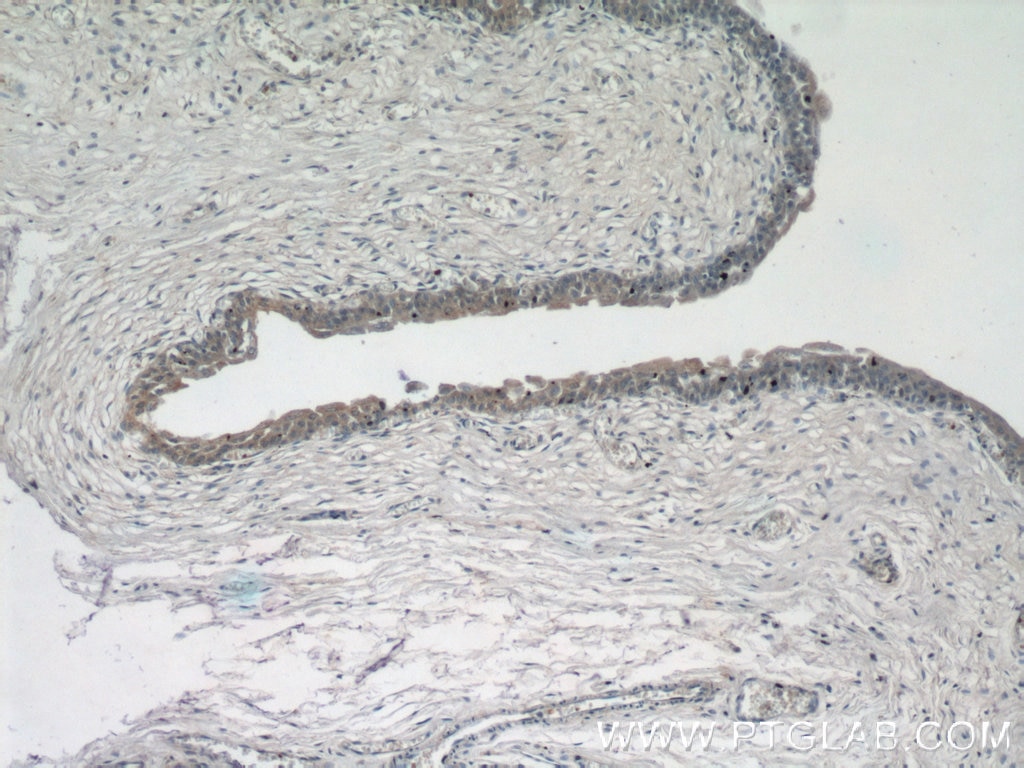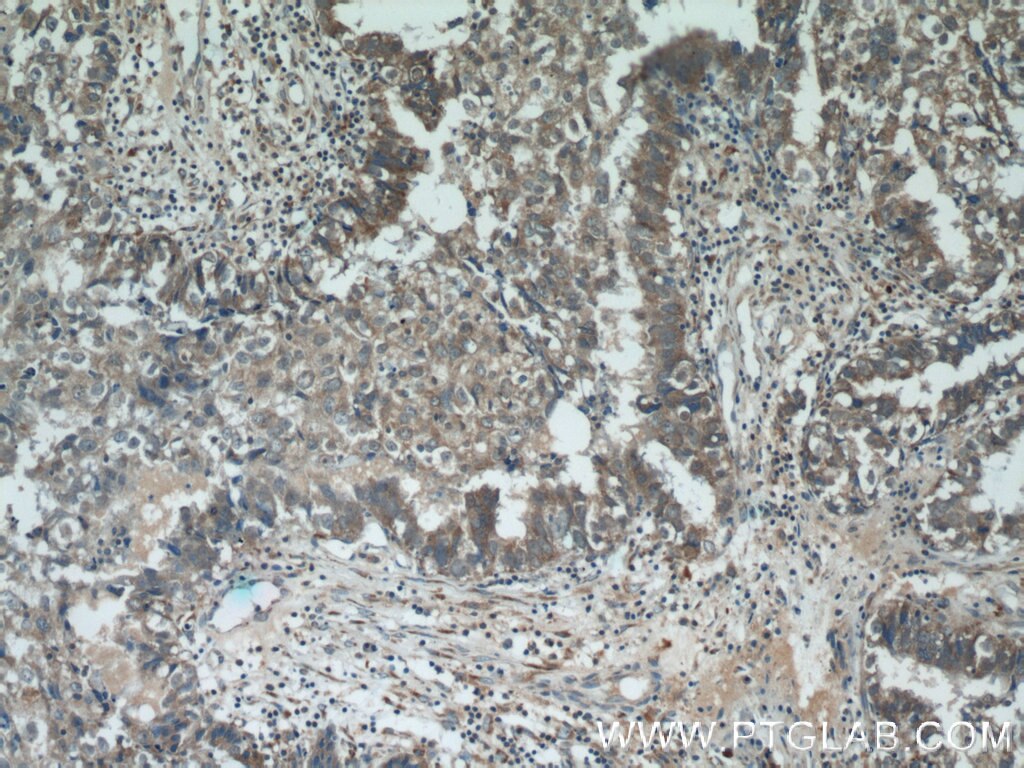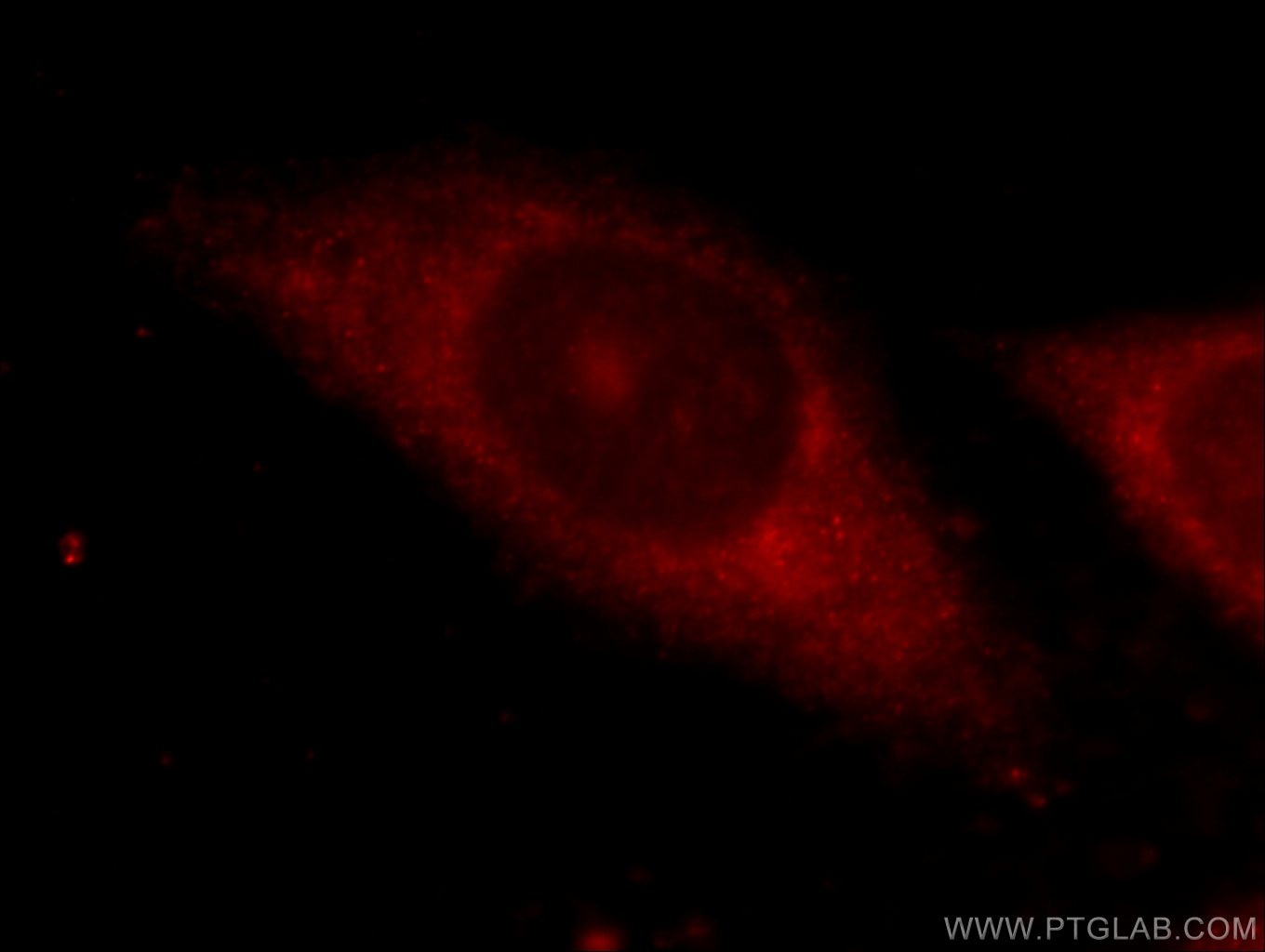Anticorps Polyclonal de lapin anti-ZFP36
ZFP36 Polyclonal Antibody for WB, IF, IHC, ELISA
Hôte / Isotype
Lapin / IgG
Réactivité testée
Humain, rat, souris
Applications
WB, IHC, IF/ICC, CoIP, RIP, ELISA
Conjugaison
Non conjugué
N° de cat : 12737-1-AP
Synonymes
Galerie de données de validation
Applications testées
| Résultats positifs en WB | tissu pulmonaire de souris, cellules A549 |
| Résultats positifs en IHC | tissu de cancer du sein humain, tissu vésical humain il est suggéré de démasquer l'antigène avec un tampon de TE buffer pH 9.0; (*) À défaut, 'le démasquage de l'antigène peut être 'effectué avec un tampon citrate pH 6,0. |
| Résultats positifs en IF/ICC | cellules HepG2 |
Dilution recommandée
| Application | Dilution |
|---|---|
| Western Blot (WB) | WB : 1:500-1:1000 |
| Immunohistochimie (IHC) | IHC : 1:20-1:200 |
| Immunofluorescence (IF)/ICC | IF/ICC : 1:10-1:100 |
| It is recommended that this reagent should be titrated in each testing system to obtain optimal results. | |
| Sample-dependent, check data in validation data gallery | |
Applications publiées
| WB | See 13 publications below |
| IHC | See 4 publications below |
| IF | See 3 publications below |
| CoIP | See 1 publications below |
| RIP | See 4 publications below |
Informations sur le produit
12737-1-AP cible ZFP36 dans les applications de WB, IHC, IF/ICC, CoIP, RIP, ELISA et montre une réactivité avec des échantillons Humain, rat, souris
| Réactivité | Humain, rat, souris |
| Réactivité citée | Humain, souris |
| Hôte / Isotype | Lapin / IgG |
| Clonalité | Polyclonal |
| Type | Anticorps |
| Immunogène | ZFP36 Protéine recombinante Ag3461 |
| Nom complet | zinc finger protein 36, C3H type, homolog (mouse) |
| Masse moléculaire calculée | 326 aa, 34 kDa |
| Poids moléculaire observé | 37-44 kDa |
| Numéro d’acquisition GenBank | BC009693 |
| Symbole du gène | ZFP36 |
| Identification du gène (NCBI) | 7538 |
| Conjugaison | Non conjugué |
| Forme | Liquide |
| Méthode de purification | Purification par affinité contre l'antigène |
| Tampon de stockage | PBS avec azoture de sodium à 0,02 % et glycérol à 50 % pH 7,3 |
| Conditions de stockage | Stocker à -20°C. Stable pendant un an après l'expédition. L'aliquotage n'est pas nécessaire pour le stockage à -20oC Les 20ul contiennent 0,1% de BSA. |
Informations générales
The expression of many cytokines is regulated post-transcriptionally by factors that modulate mRNA transport, translation, and stability. Much of this regulation occurs by the binding and stabilizing, or destabilizing, of cytokine mRNAs by proteins that recognize adenosine and uridine-rich elements (AREs) in untranslated regions of target transcripts. Zfp36 is a mRNA-binding protein involved in post-transcriptional regulation of AU-rich element (ARE)-containing mRNAs. It was demonstrated to physically interact with the p65 subunit of nuclear factor-κB leading to decreased nuclear import and diminished transcriptional activation mediated by nuclear factor-κB. It acted by specifically binding ARE-containing mRNAs and promoting their degradation, and has a crucial role in the post-transcriptional regulation of tumor necrosis factor (TNF). The calcualted molecular weight of ZFP36 is 34 kDa, but modified ZFP36 is about 40-45 kDa.
Protocole
| Product Specific Protocols | |
|---|---|
| WB protocol for ZFP36 antibody 12737-1-AP | Download protocol |
| IHC protocol for ZFP36 antibody 12737-1-AP | Download protocol |
| IF protocol for ZFP36 antibody 12737-1-AP | Download protocol |
| Standard Protocols | |
|---|---|
| Click here to view our Standard Protocols |
Publications
| Species | Application | Title |
|---|---|---|
Mol Cell Multivalent Proteins Rapidly and Reversibly Phase-Separate upon Osmotic Cell Volume Change. | ||
Dev Cell N6-Adenosine Methylation of Socs1 mRNA Is Required to Sustain the Negative Feedback Control of Macrophage Activation. | ||
Proc Natl Acad Sci U S A Brf1 posttranscriptionally regulates pluripotency and differentiation responses downstream of Erk MAP kinase. | ||
Am J Physiol Cell Physiol Cancer associated fibroblasts suppressed ferroptosis in glioblastoma via upregulating lncRNA DLEU1 | ||
Sci Rep The Fragment HMGA2-sh-3p20 from HMGA2 mRNA 3'UTR Promotes the Growth of Hepatoma Cells by Upregulating HMGA2. | ||
Oncotarget Inhibition of COX2 enhances the chemosensitivity of dichloroacetate in cervical cancer cells. |
